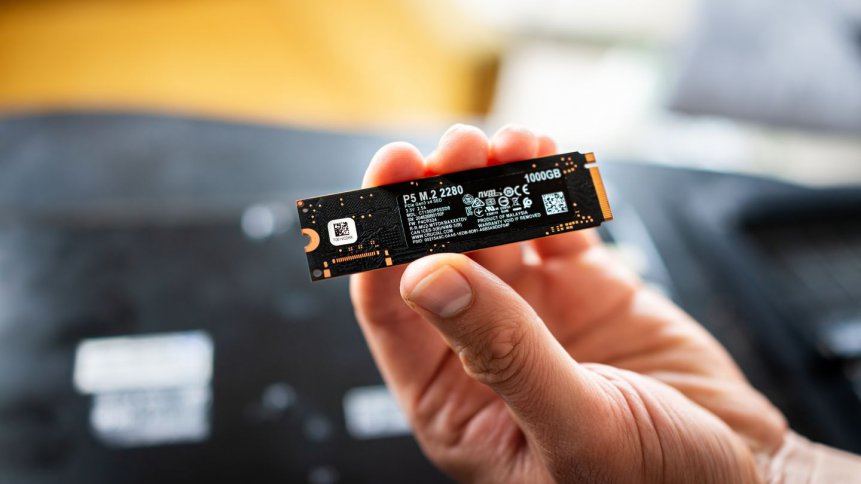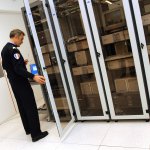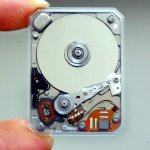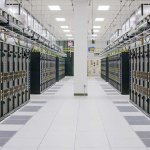SSDs and HDDs – What’s Best For What In Your Business?

On April 6, 2021, Cisco released a Field Notice, asserting that SSDs would fail after 40,000 power-on hours. That came as a shock to everyone from gamers to international tech companies, because SSD had been seen very much as the type of drive to which the world was moving – away from HDDs, which had already begun to be characterized as unnecessarily big and clunky compared to their SSD counterparts.
But if SSDs have a necessarily limited lifespan, it begs the question – which type of memory is best in what sort of scenarios?
The Pros and Cons
It’s important we’re clear that this will never be a knock-down, drag-out contest – there won’t be one single “best” type of memory. The answers will differ according to the scenarios in which the drives are used.
For clarity, it’s best to explain what each type of drive is, and how it differs from the other.
HDDs
HDDs have long been the standard hard drive on most desktop and laptop computers. An outgrowth of the principle of magnetic tape storage, they’re almost better thought of as highly efficient computer versions of vinyl albums on a turntable. The drive has an arm with several transducers (equivalent to the stylus head). Data is stored on the disc, and both written to and read from the disc by the transducers.
There are two standard form factors for HDDs – the 3.5 inch version for desktop machines, and a 2.5 inch version for laptops.
There has been some argument about the effectiveness of what already feels like a legacy technology, with its multiple moving parts, its standard (and therefore limiting) sizes and form factors, its noise levels (the spinning platter is a mechanical system) and crucially, its slowness, with the whole business of waiting for discs to get up to efficient read/write speed feeling like something from another age of computing altogether.
That said, HDDs remain, if you like, the storage device of record, and many enterprises still rely on them for on-site backups of vital information, even if these days, the backups are coupled with a cloud-based solution for a two-pronged approach to long-term data storage.
YOU MIGHT LIKE

Data storage trends set to dominate work culture in 2022
SSDs
SSDs are, by comparison, the new kid on the block, but increasingly, desktop, laptop, and tablet computers carry them. They’re known as Solid State drives, because of their very different composition and function to HDDs. All their data recorded on integrated circuits, with no moving parts. That has several important impacts. Firstly, they let you access your data a lot faster than HDDs do, because there’s none of that practically steampunk business of waiting for the HDD’s platters to get up to speed before their data can be read. Secondly, freedom from the platter and transducer system means they have no set size. They can be as large – or as small – as you like, with the trend going ever smaller, while data limits per SSDs are increasing. And thirdly, they’re silent, because all the reading and writing goes on within the circuits as an electronic, rather than a mechanical process.
You can see then why SSDs were for a while “the next big thing” in computer data storage and functionality. Smaller, lighter drives meant lighter, ultra-thin laptops, 2-in-1s, etc – SSDs were, and remain, the key to a much more portable computing world.
But the speed – and the solid state construction – comes at a price, in that SSDs are more expensive to make, and therefore comparatively expensive to own. And they’re not as reliable, long-term, as HDDs, because, for instance, you only get a limited number of writes before they start essentially wearing out, and – in a weird additional issue – the disc size effectively “shrinks” over time, because parts of its write-space can be “blacklisted” by firmware.
So, there are places and roles in which an SSD makes more sense than an HDD, but they’re by no means universally “better” than the legacy drives.
In businesses with a large remote workforce, regularly required to travel as part of their work, SSD ultra-slim laptops with a solid cloud connection come into their own. While for longer-term on-site data storage, HDDs are still the more reliable drives to use – though many companies relying exclusively on them as a single-point solution live in fear of HDD failure, meaning an additional cloud backup is always a sensible precaution.
The Tortoise and the Hare
If the comparison between HDDs and SSDs reminds you of the fable of the Tortoise and the Hare, you’d be forgiven. HDDs carry more weight for longer journeys, while SSDs run faster, slicker and are altogether more sure of themselves. In the wake of the Cisco Field Notice, it’s tempting to point to how the fable ends, but that’s to miss the point.
HDDs and SSDs are not in a race. They exist together in plenty of more modern machines, each serving a solid purpose – SSDs giving you rapid access to data and running programs fast, and HDDs being in it for the less exciting long game, acting as the memory that never forgets.
YOU MIGHT LIKE

Is this the end for hard disk drives?
It’s also worth mentioning that an SSD is often only as good as its interface – with PCLe buses now frequently fitted as standard in new machines precisely to allow SSDs to show off their speed, as opposed to HDDs, which more usually use a SATA interface. If your retrofit an SDD into a machine with just a SATA interface, it’s the equivalent of watching a 4K movie on a TV from 15 years ago. You’ve invested in the quality product, but you lose the benefits of it because the rest of your system’s not up to scratch. But get an SSD with a PCLe bus as part of an NVMe protocol, and you have yourself this year’s favorite sports car.
That’s good not just for a remote workforce who need super-light machines, it’s good for any business involving heavy-duty data crunching and/or graphical use, because the speed will come into its own in those roles.
The Best of Both Drives
Connect a host of SSD machines to a central architecture with an HDD drive and cloud backup at its core and you can legitimately get the best of both drives.
We say legitimately because there have been several attempts to mate HDDs and SSDs to create so-called “hybrid” drives. While we love the name, uptake on these combination-drives, even the Fusion Drive developed by Apple, was relatively low, and, having first developed the Fusion drive in 2012, as of 2021, no new Mac carries one.
HDDs and SSDs have different specialties – reliable, long-term on-site storage but comparatively slow start-up, versus higher speed, more flexibility, and lightweight solutions. Which is “best” for you is likely to already be a redundant question – most new office systems use both, and when you need the ultra-light flexibility of modern laptops or 2-in-1s, the nature of the work itself will guide your choices.
What no-one should do though is count the HDD out, just because it’s an older system, arguably superseded by the flexible newcomer. HDD still has a place in the core IT architecture of most companies, and will probably still hold that place for the foreseeable future. The Cisco Field Notice only underlines that likelihood, proving that while there’s absolutely a place for the SSD in modern business computing architectures, it’s by no means the single answer to the needs of the tech industry in the future.









